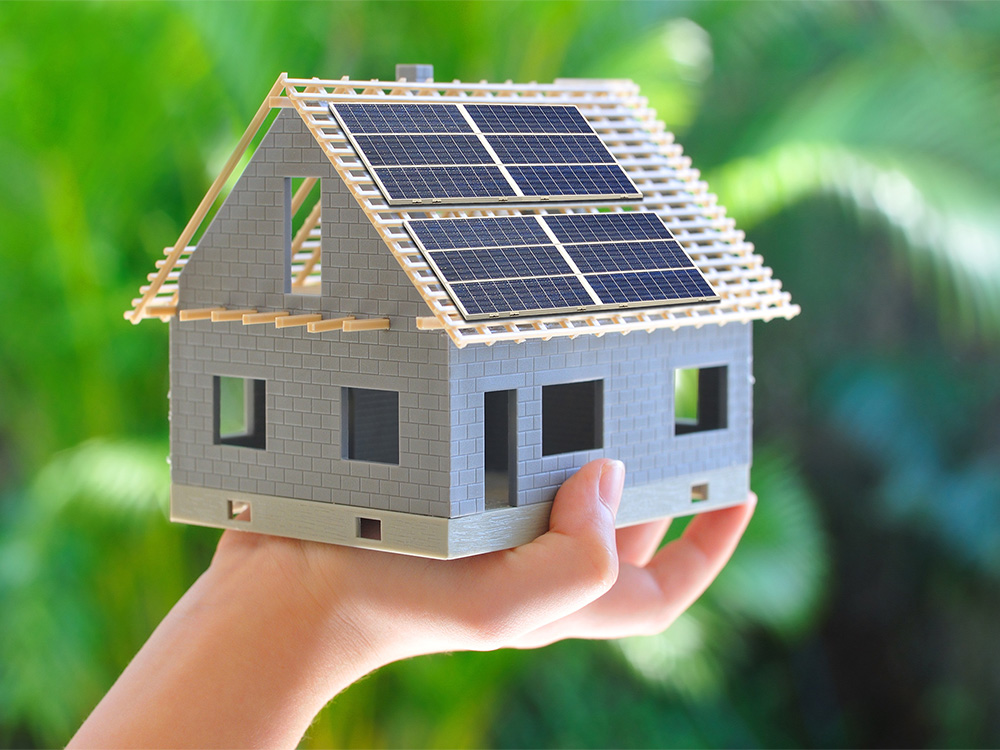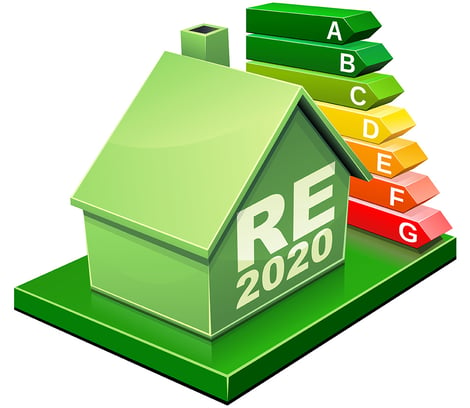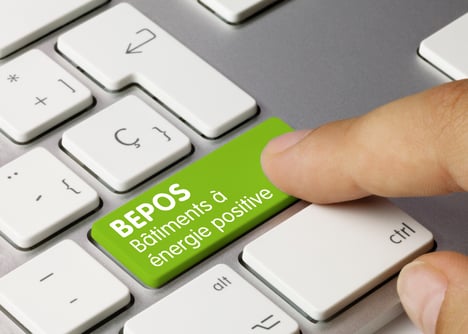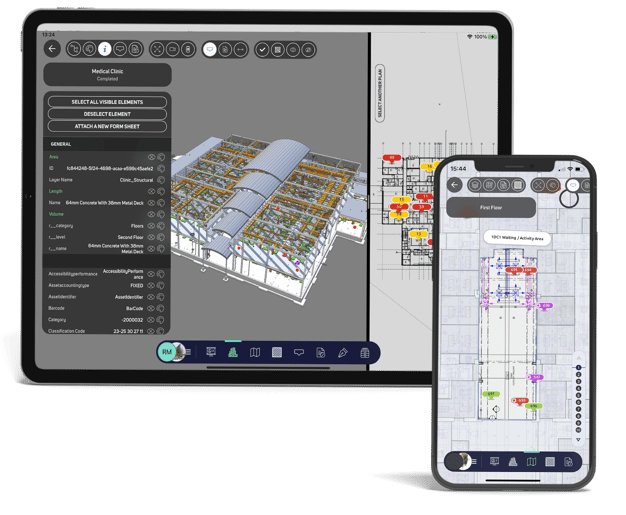Published on
The main impacts of the RE 2022 on construction projects

The entry into force of the RE 2022 (Environmental Regulation 2022) on 1 January of this year for residential buildings has ushered in a number of changes. These carry implications for the industry’s professionals, who must now review their working methods and processes to ensure they fully comply with the new guidelines. There are also additional costs associated with the application of this recent governmental regulation. To help offset these extra expenses, it could be wholly worthwhile tapping into digital technology to increase team productivity by optimising human, material and financial resources. What are the main impacts of the RE 2022 on construction projects? In what way might digital technology be a key solution for addressing the new challenges raised by the RE 2022? Find all the answers in our article.
 Environmental Regulation 2022: definition and implementation
Environmental Regulation 2022: definition and implementation
What is the RE 2022?
The RE 2022 actually came out back in 2018. It is intended to replace the RT 2012 regulation which had previously been in force to combat climate change and reduce greenhouse gas emissions in the construction industry.
The RE 2022 has applied to new builds since 1 January 2022. Its main purpose is to protect the environment better by:
- reducing the carbon footprint of new builds;
- optimising buildings’ energy performances;
- making homes naturally comfortable in both hot and cold weather, etc.
In short, builders must limit the impact their buildings have from an environmental and energy point of view, without overlooking occupants’ quality of life. Application of the RE 2022 should, moreover, lower buildings’ energy needs by 30% and make a positive contribution to the circular economy.
Building energy-plus real estate and passive homes
To achieve the objectives of the RE 2022, stakeholders in the construction & civil engineering works sector must particularly use suitable construction materials. They also need to leverage the concept of energy-plus buildings. In other words, homes need to produce more energy than they consume. They must also be capable of producing their own energy thanks to the installation of solar panels, for example. If they are to make more sparing use of heating, air conditioning, lighting, ventilation and domestic hot water, new builds also need to be better insulated. This is the only way property developers are going to be able to build energy-plus real estate and passive homes.

The main differences between the RE 2022 and RT 2012
As explained above, there are some differences between the RE 2020, which came into force in January 2022, and the RT 2012. The latter was grounded in BBC (low-energy building) certification which limits the energy consumption of homes to 50 kWh/m2. The RE 2022, for its part, goes further by laying down the BEPOS (energy-plus building) standard. This means that the building must produce more energy that it consumes.
Similarly, the RT 2012 only regulated the use of heating, domestic hot water production, air conditioning and lighting. It ultimately focused above all on the thermal insulation of buildings, whereas the RE 2020 factors in all of these elements and goes further still. It takes into account not only the consumption of household and electrical appliances but also the carbon impact of buildings.
Overall, the RT 2012 and RE 2020 do not have the same objectives. The RT 2012 aimed at reducing energy use, while the RE 2022 sets out to end energy waste.
The impacts of the RE 2022 on construction projects
The RE 2022’s implementation has repercussions for construction projects. Property developers have no choice but to review their processes in order to comply with this new regulation. It now requires them to:
- ensure full thermal insulation of buildings by using renewable organic materials (hemp or cellulose insulation, etc.);
- provide effective ventilation (dual-flow mechanical extract ventilation, heat pump, etc.);
- accurately analyse the location and orientation of buildings to benefit from maximum sunshine levels in winter;
- make use of renewable energy sources or suitable technologies to enable buildings to produce their own energy (solar panels, earth tubes, etc.);
- install high-quality glazing for better heat regulation: heat loss is avoided in winter, and homes stay cool in the summer (summer comfort);
- provide rainwater harvesting systems;
- reduce the energy consumption of household appliances installed in homes.
If these guidelines are all followed and the use of fossil fuels is limited, the Environmental Regulation 2022 should reduce the impact buildings have on the environment. This will be of benefit both to the planet and housing occupants themselves.
Harnessing digital technology to better address the challenges of the RE 2022
Buildings that comply with the RE 2022 standards are more expensive to buy because they also cost more for property developers to build. Indeed, the industry’s stakeholders have had to roll out new procedures which have generated irreducible additional expenses. Tapping into the advantages of digital tools therefore strikes as the most effective solution in this respect to improve business processes whilst maintaining some financial flexibility.
By leveraging digital technology, builders can particularly:
- ensure better traceability of measures taken on buildings to optimise their use;
- compile and file digital building permits to save time and act in a sustainable manner without printing out reams of paper;
- map all of the materials required for the future building so as to optimise its renovation, use, repurposing or dismantling;
- create 2D and 3D views of facilities to identify what measures to take to optimise the energy consumption of homes;
- gain a clearer understanding of the composition of real estate assets so as to better estimate the work to be carried out, its timescale and cost;
- centralise all of the relevant documents in an Electronic Document Management (EDM) system for example;
- perform Quality, Health, Safety & Environment (QHSE) checks to demonstrate that the building duly complies with the RE 2022 standards.

So as you can see, digital technology can help you to offset the additional outlays. It will enable you to optimise business processes or streamline communication between all of the stakeholders (main contractors, project owners, architects, subcontractors, etc.). The latter will, in this case, be able to work on a single platform which centralises all of the information required for the project to run smoothly.
On a final note, another – and by no means insignificant – advantage is that you will be able to ensure full compliance with the RE 2022 at every stage of the building process. What’s more, you’ll be able to better analyse the life cycle of buildings in their entirety, and thus more accurately assess their environmental impact as the works are progressing.
To conclude, the entry into force of the RE 2022 could be an excellent opportunity to digitise your business more quickly. At Kairnial, we can help you to standardise and centralise your QHSE processes using entirely configurable forms that are made available to the teams. These can be connected to 2D plans and even in the BIM model. If you would like to find out more, please contact us.

